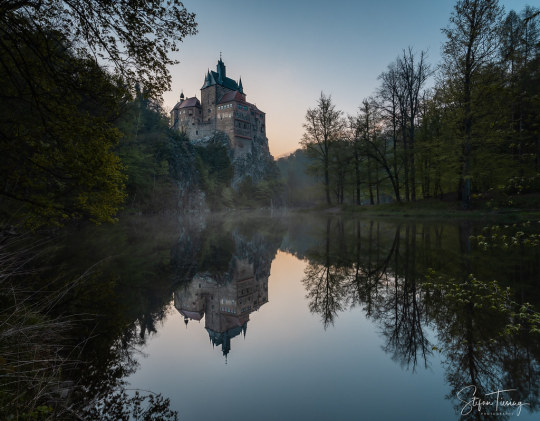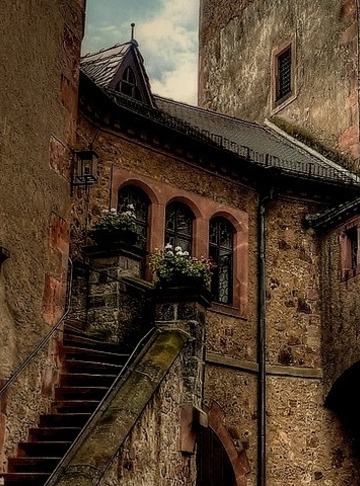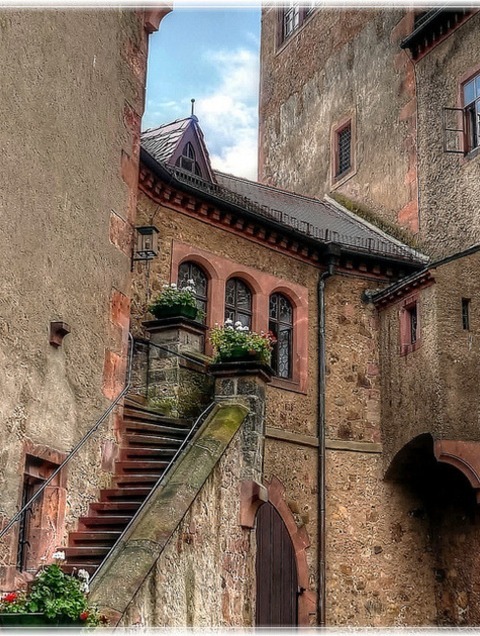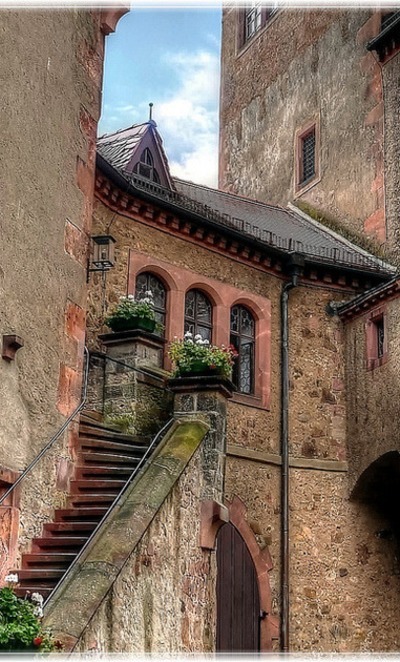#waldheim
Explore tagged Tumblr posts
Text
Ergebnisse der Bundestagswahl 2025

Roter Sonnenaufgang über Döhren nach der Bundestagswahl
Es hatte sich in zahlreichen Wahlprognosen vor dem Wahlsonntag am 23.2. bereits angekündigt: Die Linke ist wieder im Bundestag - mit 8,77 % der Zweitstimmen (4.355.382 Wähler*innen) und 6 Direktmandaten (Erststimme) deutlich verbessert im Vergleich zur Bundestagswahl 2021 mit ehemals 4,9 % und drei Direktmandaten! (Das bisher beste Ergebnis gab es 2009 mit 11,9 % der Zweitstimmen.)
Allein in Berlin zogen nun auch 4 Direktkandidat*innen: unsere Bundesvorsitzende Ines Schwerdtner (Lichtenberg, bisher Genossin Gesine Lötzsch), Gregor Gysi (Treptow-Köpenick, seit 2005), Ferat Koçak (Neukölln, erster nicht-ostdeutscher Direktwahlkreis für die Linke bei einer Bundestagswahl) und Pascal Meiser (Friedrichshain-Kreuzberg, bisherige Grünen-Hochburg in Berlin). Dazu kommen noch Sören Pellmann im Wahlkreis Leipzig II (Sachsen, Wiederholungstäter) und Bodo Ramelow im Wahlkreis Erfurt, Weimar sowie Grammetal im Weimarer Land (Thüringen) mit 10-%-Punkten vor der AfD und damit dem einzigen Thüringer Wahlkreis, der nicht an die AfD ging. In Berlin wurde Die Linke erstmal stärkste Zweitstimmen-Partei mit 19,9 % (+8,4 %).
Insgesamt zogen also 6 Direktkandidat*innen und 58 Zweitstimmenkandidat*innen von den Landeslisten in den Bundestag ein, davon 6 Mitglieder aus Niedersachsen. Die Landesliste erreichte 8,1 % der Zweitstimmen (2021 nur 3,2 %) bei einer sehr hohen Wahlbeteiligung von 83,4 %. Unsere neuen Bundestagsabgeordneten sind: Heidi Reichinnek (Spitzenkandidatin, Osnabrück), Cem Ince (Salzgitter), Maren Kaminski (Hannover), Maik Brückner (Hildesheim), Anne-Mieke Bremer (Nienburg) und Jorrit Bosch (Braunschweig). Es folgen (als evtl. Nachrücker) Marianne Esders (Lüneburg), Viktor Linsel (Lüchow-Dannenberg) und Manuela Mast (Celle).
Wir danken unseren bisherigen Abgeordneten! Heidi Reichinnek ist weiterhin im Bundestag vertreten. Victor Perli (Wolfenbüttel) ist nach zwei Wahlperioden nicht mehr angetreten. Amira Mohammed Ali hatte Anfang 2024 ihr Linken-Mandat zum BSW mitgenommen und hat den Wiedereinzug in den Bundestag verpasst.
In der Stadt Hannover konnte Die Linke ihr Zweitstimmenergebnisse im Vergleich zu 2021 von 5,4 auf 14,3 % deutlich verbessern. In den 20 Umlandkommunen wurden 7,2 % erreicht (2021 nur 2,7 %).
In der Stadt schnitten folgende Stadtteile besonders gut ab und wurde Zweitstimmen-Wahlsieger:
Linden-Nord 34,7 % Nordstadt 30,1 % Linden-Süd 29,7 % Limmer 24,9 % Hainholz 22,4 %.
Weiterhin gut schnitten wir hier ab:
Linden-Mitte 28,9 % Calenberger Neustadt 27,7 % Mitte 20,4 %.
Die Stadtteile in der Basisorganisation Hannover-Südost schnitten wie folgt ab:
Wülfel 13,6 % Döhren 13,0 % Mittelfeld 12,1 % Bemerode 9,8 % Seelhorst 8,7 % Waldheim 8,4 % Wülferode 8,3 % Waldhausen 8,0 % Kirchrode 5,6 %.
Laut sozialdemografischer Analyse der Stadt Hannover schneidet Die Linke in sozial benachteiligten Stadtteilen besonders gut ab. In unserer Basisorganisation sind das Wülfel und Mittelfeld.

Zweitstimmen Der Linken zur Bundestagswahl 2025 in den Wahlbezirken der Stadt Hannover
Einher mit der deutlich verbesserten Stimmungslage gegenüber der Linken (O-Ton: "Die Linke ist cool.") sind auch die Mitgliederzahlen beispiellos explodiert: von ehemals knapp 500 Mitgliedern in der Region Hannover nach der Abspaltung des BSW Anfang 2024 auf mittlerweile fast 1700 Mitglieder Anfang März 2025. Mehr als 50 % der Neumitglieder sind dabei weiblich oder divers und das Durchschnittsalter beträgt knapp über 30 Jahre. In Niedersachsen hat sich die Mitgliederzahl entsprechend von ca. 2500 auf 8000 ebenfalls mehr als verdreifacht.
Thorben Peters, Landesvorsitzender:
Das Wahlergebnis hat mit Blick auf CDU & AfD auch ein erstarktes Lager rechts der Mitte hervorgebracht. Dem eisigen Wind welcher aus dieser reaktionären bis rassistischen Ecke kommt, werden wir uns mit neuer Kraft entgegenstellen. Mit Blick auf die vielen Proteste und auch Streiks können wir feststellen, dass wir nicht alleine sind. Lasst uns diese Kräfte bündeln, um nicht nur klare Kante gegen sozialen Karlschlag, rechter Hetze, Umweltverschmutzung und Militarisierung zu zeigen. Lasst uns für einen Richtungswechsel kämpfen, damit auch in der Politik auf den Winter der Frühling folgt!
#die linke#bundestagswahl#hannover#döhren#bemerode#kirchrode#wülfel#mittelfeld#wülferode#seelhorst#wadhausen#waldheim
3 notes
·
View notes
Text



Beste Schwarzwälder Kirschtorte🍒

2 notes
·
View notes
Text
instagram
Kriebstein Castle is a castle founded in the 14th century in the municipality of the same name, Kriebstein, near the town of Waldheim in Saxony. The castle rises on a steep rock above the Zschopau in Kriebstein. Within the topographical group of hilltop castles, it epitomises the type of spur castle: it is situated on the outermost spur of a mountain spur surrounded on three sides by the Zschopau in a wide arc.
Some Glimpses from Germany for your Weekend :)
2 notes
·
View notes
Photo
Some Glimpses from Germany for your Weekend :)

Kriebstein Castle, Germany (by bin.)
2K notes
·
View notes
Text

WALDHEIM -> GERMANY
#Waldheim#ansichtskarte#kartka#litho#collage#litografia#postkarte#lithograph#gruss aus#post card#niemcy#germany
0 notes
Text
'The Brides of Waldheim'
The Summer 2024 Issue of Morasha, the newsletter of the Jewish Genealogical Society of Illinois, featured an article by JGSI member Sandra Parker about ceramic bridal portraits of deceased women buried in Waldheim Cemetery in Forest Park, Illinois. To see some of these beautiful images, go to: https://jgsi.org/thebridesofwaldheim
0 notes
Photo

Stairway, Castle Kriebstein, Waldheim, Germany
0 notes
Photo

Stairway, Castle Kriebstein, Waldheim, Germany
0 notes
Text
Stairway, Castle Kriebstein, Waldheim, Germany

0 notes
Photo

Stairway, Castle Kriebstein, Waldheim, Germany
0 notes
Text

Jeany Waldheim by Simon Bolz
- Playboy Germany
75 notes
·
View notes
Text

Himmlische Schwarzwälder Kirschtorte 🫶🏻
#germany#schwarzwälder kirschtorte#zavelstein#bad teinach#delicious#lecker#waldheim#blackforest#schwarzwald
1 note
·
View note
Text
The Siberian Unicorn

Reconstruction of an Elasmotherium, an extinct species of rhino that lived in the Eurasian area in the Late Pliocene and Pleistocene eras (around 39,000 years ago).
This animal could have been the basis for the unicorn myth that has persisted for thousands of years.
The Giant Siberian Unicorn, also known by its scientific name, Elasmotherium (E. sibiricum), is an extinct species of giant rhinoceros that had an extremely large horn on its forehead and a body covered in shaggy fur.
It was first named by Johann Gotthelf Fischer von Waldheim (13 October 1771 – 18 October 1853) in 1808. He was the director of the Natural History Museum in Moscow.
The Giant Siberian Unicorn was about the size of a mammoth. However, early reports say this beast weighed up to 4 tonnes, stood at 6.5 feet tall, and was about 14.76 feet long.
It has been debated on if this animal would gallop like a horse or would walk hunched over with his head to the ground like a bison.
The beast's front feet were larger than the rear and it had just three digits.
It is also debated on whether it had a giant horn on its head or not. Most experts believe it did as there is reasonable evidence of it having a horn based on the skulls they have found.
The skulls had a protuberance that suggested it was the base of a large horn.
The use of this horn could have been to dig for food, attract mates, and for self-defense.
It is believed that their horns and hooves were made of keratin — that is, if the horns did exist.
The Giant Siberian Unicorn lived in the Eurasia region during the late Pliocene and Pleistocene periods.
Giant rhinos have been documented from as late as 2.6 million years ago.
A skull was found in 2016 that was perfectly preserved and was of a very old male.
The skull was found in the Pavlodar region of Kazakhstan. It was proven that they died out just 29,000 years ago.
Previously, it was believed they died out around 350,000 years ago, which means they were around when early humans were alive.
From looking at their teeth, it is believed the Siberian Unicorns were herbivores with a diet of grass, plant bulbs, and tubers.
They think this creature could have used its horn to dig up plant bulbs and tubers to eat while also grazing on grass.
Weighing four tons means it would have to eat a lot, so it is thought they would travel miles just grazing and digging up plants to eat.
It is still unclear what caused the death of these beautiful giants.
Little evidence has shown us how they died out, however, scientists believe it could have been environmental factors that resulted in their extinction.
Others believe it could be due to having such a restricted diet or being a “picky eater.”
After the Ice Age ended, the grasslands began to shrink, causing fewer areas for the giant rhino to eat.
Human hunting may also have a hand in its extinction.
Natural History Museum, Moscow
#Elasmotherium#Siberian Unicorn#rhinoceros#Late Pliocene#Pleistocene#Giant Siberian Unicorn#Johan Fisher von Waldheim#Natural History Museum#horn#herbivores#extinction#Eurasia#palaeontology#fossil record#fossils#saint of the day#Moscow#Russia
14 notes
·
View notes
Text

Zanis Waldheims
7 notes
·
View notes
Text
Kurt Waldheim: Guilt
United Nations Security Council Resolution 400 (Photo credit: Wikipedia) “There is no such thing as collective guilt. ” —Kurt Waldheim.

View On WordPress
0 notes
